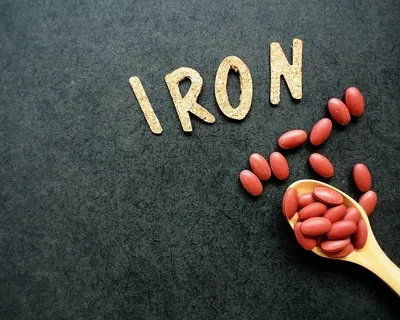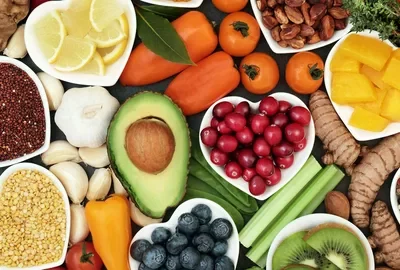The Flexitarian Diet: A Detailed Beginner’s Guide

Understanding the Flexitarian Diet
The Flexitarian Diet is centered around the following principles
Plant-Based Emphasis
The foundation of the Flexitarian Diet is plant-based foods such as fruits, vegetables, whole grains, legumes, nuts, seeds, and plant-based protein sources like tofu and tempeh. These foods provide essential nutrients, fiber, and phytonutrients that support overall health.
Flexibility with Animal Products
While the Flexitarian Diet emphasizes plant-based foods, it also allows for moderate consumption of animal products, including meat, poultry, fish, eggs, and dairy. Flexitarians have the flexibility to include these foods in their diet occasionally, rather than as staples.
Focus on Whole Foods
Whole, minimally processed foods are prioritized over highly processed and refined products. This includes choosing whole grains over refined grains, whole fruits over fruit juices, and homemade meals over pre-packaged convenience foods.
Portion Control
Paying attention to portion sizes and listening to hunger and fullness cues is important on the Flexitarian Diet. Balancing calorie intake with physical activity can support weight management and overall health.
Mindful Eating
Practicing mindful eating, such as savoring each bite, paying attention to hunger and fullness cues, and eating without distractions, can help foster a healthy relationship with food and promote enjoyment of meals.
Health Benefits of the Flexitarian Diet
The Flexitarian Diet offers numerous potential health benefits, including:
Improved Heart Health
Emphasizing plant-based foods and reducing intake of red and processed meats may lower the risk of heart disease by reducing cholesterol levels, blood pressure, and inflammation.
Weight Management
The Flexitarian Diet’s focus on plant-based foods, which are typically lower in calories and higher in fiber, can support weight loss or weight maintenance goals when combined with portion control and regular physical activity.
Reduced Risk of Chronic Diseases
Consuming a diet rich in fruits, vegetables, whole grains, legumes, nuts, and seeds may lower the risk of chronic diseases such as type 2 diabetes, certain cancers, and obesity.
Environmental Sustainability
Choosing plant-based foods over animal products can have environmental benefits, including reduced greenhouse gas emissions, less water usage, and lower energy consumption.
Improved Digestive Health
Plant-based foods are rich in fiber, which supports digestive health by promoting regularity, preventing constipation, and nourishing beneficial gut bacteria.
Getting Started with the Flexitarian Diet
Here are some tips for beginners looking to adopt the Flexitarian Diet:
Gradual Transition
Start by gradually incorporating more plant-based foods into your meals while reducing your intake of animal products. Experiment with new recipes and ingredients to discover enjoyable plant-based options.
Focus on Whole Foods
Choose whole, minimally processed foods whenever possible. Fill your plate with a variety of colorful fruits, vegetables, whole grains, legumes, nuts, and seeds.
Plan Balanced Meals
Aim to include a balance of macronutrients (carbohydrates, protein, and fat) in each meal. Build meals around plant-based sources of protein such as beans, lentils, tofu, or tempeh, and add plenty of vegetables and whole grains.
Experiment with Meat Alternatives
Explore plant-based meat alternatives such as veggie burgers, plant-based sausages, and meatless crumbles to add variety to your meals.
Include Healthy Fats
Incorporate sources of healthy fats such as avocados, nuts, seeds, and olive oil into your diet to support heart health and satiety.
Read Labels
When choosing packaged foods, read labels carefully and opt for products with minimal ingredients and minimal processing. Look for products that are high in fiber and low in added sugars, sodium, and unhealthy fats.
Stay Hydrated
Drink plenty of water throughout the day to stay hydrated and support overall health. Limit consumption of sugary beverages and opt for water, herbal tea, or infused water instead.
Sample Flexitarian Meals
Here are some examples of meals that fit the Flexitarian Diet
Breakfast
Overnight oats topped with sliced bananas, chopped nuts, and a drizzle of almond butter.
Lunch
Quinoa salad with mixed greens, cherry tomatoes, cucumber, avocado, chickpeas, and a lemon-tahini dressing.
Dinner
Lentil and vegetable stir-fry served over brown rice with a side of steamed broccoli.
Snacks
Carrot sticks with hummus, apple slices with almond butter, or a handful of mixed nuts and dried fruit.
Frequently Asked Questions (FAQs)
Is the Flexitarian Diet Suitable for Vegetarians or Vegans?
Yes, the Flexitarian Diet can be adapted to suit a vegetarian or vegan lifestyle by focusing primarily on plant-based foods and eliminating or minimizing animal products.
Can I Still Get Enough Protein on the Flexitarian Diet?
Yes, plant-based sources of protein such as beans, lentils, tofu, tempeh, nuts, seeds, and whole grains can provide an adequate amount of protein to meet daily needs.
How Often Can I Include Meat and Other Animal Products on the Flexitarian Diet?
The frequency of including meat and other animal products can vary depending on individual preferences and health goals. Some flexitarians may choose to include animal products a few times a week, while others may consume them less frequently.
Will I Experience Weight Loss on the Flexitarian Diet?
Weight loss may occur on the Flexitarian Diet, especially if it leads to a reduction in calorie intake and an increase in physical activity. However, individual results may vary depending on factors such as starting weight, metabolism, and overall dietary patterns.
Are There Any Foods I Should Avoid on the Flexitarian Diet?
While there are no strict rules about which foods to avoid on the Flexitarian Diet, it’s generally recommended to limit highly processed and refined foods, sugary snacks and beverages, and foods high in unhealthy fats and added sugars.
Can I Still Enjoy Dining Out on the Flexitarian Diet?
Yes, the Flexitarian Diet allows for flexibility when dining out. Look for restaurants that offer a variety of plant-based options, and don’t hesitate to ask for substitutions or modifications to accommodate your dietary preferences.
Conclusion
The Flexitarian Diet offers a flexible and sustainable approach to eating that prioritizes plant-based foods while allowing for occasional inclusion of meat and other animal products. By emphasizing whole, minimally processed foods and focusing on nutrient-dense plant-based sources of protein, fiber, vitamins, and minerals, the Flexitarian Diet can support overall health and well-being. Whether you’re looking to improve your health, reduce your environmental footprint, or simply enjoy more plant-based meals, the Flexitarian Diet provides a balanced and adaptable framework for achieving your dietary goals. Experiment with new recipes, listen to your body’s cues, and enjoy the journey toward a healthier and more sustainable way of eating.
- The Flexitarian Diet: A Detailed Beginner’s Guide - May 6, 2024
- 6 Side Effects of Too Much Cinnamon - May 6, 2024
- Iron Supplements: Who Should Take Them? - May 6, 2024





